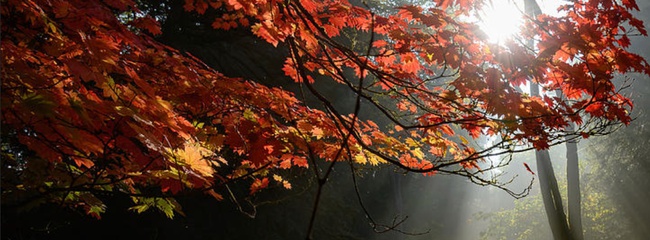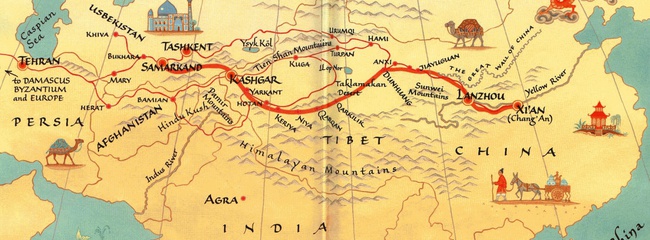The "masjid" in Al Quran 17:01
The holy site in Jerusalem existed for hundreds of years before Prophet Muhammad ﷺ was even born. The first construction of the site on historical Jewish Temple Mount (Beit al hamikdash) took place around Prophet Suleiman (Solomon) (alaihi salaam) time and it has existed since then. Some non-Muslims inquire how could the Quran claim that Prophet Muhammad ﷺ traveled to a masjid, which is generally understood as a ‘Muslim place of worship’, when the site did not become a Muslim place of worship till decades after his passing away. What can clarify this apparent confusion is if we understood the term "masjid" and what Quran is saying. Allah ﷻ uses the Arabic term masjid and not an English word ‘mosque’ when referring to the holy site in Jerusalem. Mosque term is only found in some English translations of Quran 17:01. If we use the term masjid instead of ‘mosque’ then the verse makes perfect sense. In English a ‘mosque’ is defined as a place of worship for Muslims only, while the term masjid means ‘a place of worship’ without confining its meaning for a particular religious community. Therefore, a church, a temple, a monastery, all of them can be called a masjid in the wider sense of the term as they are all places where worship is done and that is how the term is used in the verse: (Al Quran 17:01) “Exalted is He who took His Servant by night from al-Masjid al-Haram (place of worship in Makkah) to al-Masjid al- Aqsa (place of worship in Jerusalem), whose surroundings We have blessed, to show him of Our signs. Indeed, He is the Hearing, the Seeing.”
A brief history of the holy site during 600 - 630 CE.
Various historical sources prove that there was indeed a 'masjid' i.e. place of worship, a structure at the site of the temple during Prophet Muhammad’s claim of night journey. Prophet Muhammad ﷺ received his first Quranic revelation around 610 CE in Makkah. During this period Jerusalem was under the control Persian Sassanian Empire. In 610 CE, the Sassanians drove the Byzantines out of the Middle East, giving the Jews control of Jerusalem for the first time in centuries since their expulsion in 70 CE. The Jews in Palestine were allowed to set up a vassal state under the Sassanians called the Sassanid Jewish Commonwealth which lasted for five years. Jewish rabbis ordered the restart of animal sacrifice for the first time since Second Temple and started to reconstruct the Jewish Temple.[1] During the Byzantine–Sassanian War of 602 – 628 CE the entire lands of the Middle East had been taken over by the Persians and by 615 - 616 CE Byzantine lost complete control. During this period the Persians allowed the Jews to reconstruct their temple, which is a proof that a Jewish place of worship did exist while Prophet ﷺ was preaching in Makkah. After takeover by the Persians, local Christians revolted and in 617 CE the Persians had reversed their policy and sided with the Christians over the Jews. After 617 CE the Christians were in charge of the city and partially razed the Jewish construction of the temple. A small synagogue on the Temple Mount was demolished.[2] In another historical source suggests that in 615 CE, the Persians gave control to the Christian population, who tore down the partially built Jewish Temple edifice and turned it into a garbage dump.[3] This proves that Christians remained in charge of the holy site till the Muslim take over of the town in 637 CE. The rebuilt holy temple site was razed by Christians under the rule of Persians around 615 to 617 CE but no evidence suggests that it was completely demolished or removed. In the light of these facts we can agree that partial structure of the temple did remain, if not complete, during Prophet's preaching in Makkah and when his miraculous journey happened.
The holy site under a Christian patriarch
Islamic sources also concur that there was a structure on the holy site during prophet’s time in Makkah. According to the prophet’s biography Al Raheeq Al Maktum (The Sealed Nectar), it is claimed that he went on the night journey twelve to sixteen months prior to his hijrah (emigration) to Madinah. According to the Gregorian calendar it was a 621 CE which is twelve months prior to his hijrah which took place in 622 CE.[4] It was around 621 CE the partially razed site was under Christian control till Byzantine rule was reestablished over the region in 628 CE. Interestingly Islamic sources also suggest that during Prophet’s preaching in Makkah the holy site was under a Christian Patriarch and there was a structure there which was not intact and there was even some fault in the construction, which could be due to razing attempts by Christians in 617 CE. In his book Dala'il An-Nubuwwah, Al-Hafiz Abu Nu’aym Al-Isbahani[5] an expert of hadith recorded via Muhammad bin Umar Al-Waqidi[6], an 8th century historian and biographer of the prophet's life, who said:
“Malik bin Abi Ar-Rijjal told me from Amr bin Abdullah that Muhammad bin Kab Al-Qurazi said: "The Messenger of Allah sent his companion Dihyah bin Khalifah[7] to Caesar.'' He mentioned how he came to him, and described an incident that showed how wise Caesar was. He sent for the Arab merchants who were in Syria and Abu Sufyan Sakhr bin Harb[8] and his companions were brought to him. He asked them the well-known questions that were recorded by Al-Bukhari and Muslim, as we shall discuss below, and Abu Sufyan tried hard to give the impression that this was an insignificant issue. The narrator said that Abu Sufyan later said: "By Allah, nothing stopped me from saying something to Heraclius[9] to make him despise Muhammad but the fact that I did not want to tell a lie that would later be found out, and he would never believe me again after that. Then I told him about the night on which he was taken on the Night Journey. I said: `O King, shall I not tell you of something from which you will know that he is lying' He said: 'What is it' I said: 'He claims that he went out of our land, the land of Al-Haram, in one night, and came to your sanctuary in Jerusalem, then came back to us the same night, before morning came.' The Patriarch of Jerusalem was there, standing next to Caesar. The Patriarch of Jerusalem said: 'I know that night.' Caesar looked at him and said, `How do you know about this' He said, `I never used to sleep at night until I closed the doors of the sanctuary. On that night I closed all the doors except for one, which I could not manage to close. I asked my workers and others who were with me to help me deal with it, but we could not move it. It was like trying to move a mountain. So I called the carpenters, and they looked at it and said: The lintel and some part of the structure has fallen onto it. We cannot move it until morning, when we will be able to see what the problem is. So I went back and left those two doors open. The next morning I went back, and saw that the stone at the corner of the sanctuary had a hole in it, and there were traces of an animal having been tethered there. I said to my companions: This door has not been closed last night except for a Prophet, who prayed last night in our sanctuary.”[10]
This source provides evidence that a structure did exist on the same site where Jewish temple (Beit al hamikdash) existed and it was under the care of a Christian Patriarch. Also the door of this sanctuary could not be shut probably as a result of earlier damage which indeed occurred after 617 CE when Persians handed over the rebuilt Jewish temple to Christians who partially razed it. Unfortunately we do not know the name of this Patriarch.
Excavation of the site prove Byzantine Church predates Mosque
There is also evidence that a Byzantine church or a monastery existed on the temple site beneath the Aqsa Mosque discovered during an excavation carried out in 1930s by R. W. Hamilton, director of the British Mandate Antiquities Department, in coordination with the Wakf Islamic Trust that administers the compound. This excavation took place following the earthquakes that badly damaged the mosque in 1927 and 1937. This was the only recent excavation that has ever taken place keeping in mind the Jewish and Muslim sensitivities and it suggests that the Al Aqsa mosque may have been built over a site of a church and it was not a fresh construction. Hamilton uncovered a Byzantine mosaic floor and beneath it a mikva (ritual bath) from the Second Temple period (around 70 CE). The photographs of his excavation are found in the British archeological archives that are kept at the Antiquities Authority in Jerusalem. Zachi Zweig, an archaeologist who viewed them said that a similar mosaic can be found at the Church of the Nativity in Bethlehem. The mosaic found in the Temple Mount is dated to the fifth to seventh centuries, said Dr. Rina Talgam, a mosaic expert at the Hebrew University of Jerusalem. Zweig and his team claim that the Byzantine mosaic floor, which was uncovered under the mosque, is "without a doubt" the remains of a public building - likely a church - which predated the mosque. “It is hard to establish with certainty that this was indeed the site of a church, but without a doubt it served as a public building and was likely either a church or a monastery.” said Zweig[11]
Hence results from recent excavation also confirm that a religious structure or place of worship existed at the holy site from where the Prophet ﷺ ascended around 621 CE, which was part of the historic Al Aqsa. Therefore all this confirms the existence of a place of worship when Quran claims that Allah ﷻ sent his Prophet ﷺ to the 'masjid' in Jerusalem.
References:
[1] Karmi, Ghada (1997). Jerusalem Today: What Future for the Peace Process?. Garnet & Ithaca Press. p. 116 - Wikipedia, Temple Mount 2019
[2] R. W. THOMSON; JAMES HOWARD-JOHNSTON; TIM GREENWOOD (1999). The Armenian History Attributed to Sebeos - Wikipedia, Sasanian conquest of Jerusalem 2019
[3] Karmi, Ghada, Jerusalem Today - Wikipedia, Temple Mount 2019
[4] al-Mubarakpuri, Safi-ur-Rahman. 1996. Al-Raheeq Al-Makhtum (The Sealed Nectar). Dar-us-Salam Publications.
[5] A medieval Persian Muslim Scholar (d 1038 CE)
[6] An early Muslim historian and biographer of Prophet Muhammad (d 823 CE)
[7] A companion of the Prophet who delivered his message to Byzantine Emperor Heraclius.
[8] Chief of Quraysh in Makkah and a major opponent of the Prophet after his emigration to Madinah. He later accepted Islam after the conquest of Makkah.
[9] An emperor of Byzantine Empire who ruled from 610-641 CE.
[10] Dalail Al Nabuwwah, Al-Hafiz Abu Nuaym Al-Isbahani, Tafsir ibn Kathir - Surah Al Israa (Chapter 17) Ayah 1, An Interesting Story
[11] LEFKOVITS, ETGAR. 2008. Was the Aksa Mosque built over the remains of a Byzantine church? The Jerusalem Post. November 16. Accessed March third, 2019.
- (LEFKOVITS 2008) - https://www.jpost.com/israel/was-the-aksa-mosque-built-over-the-remains-of-a-byzantine-church
About
Zaid Shah
I carry a passion for Researching, Learning & Writing on Various Islamic Topics. To read more of my work You can also visit my personal blog website www.rizqankareem.com. You can also follow me on Instagram: https://www.instagram.com/rizqan_kareem/





